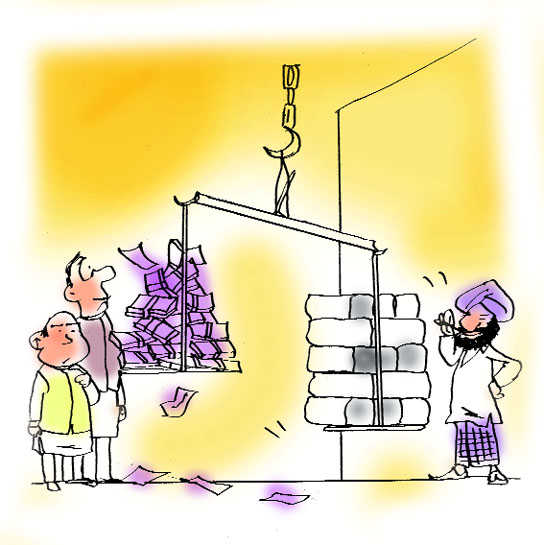Punjab cotton farmers are all set for bumper yield this season with a significant jump in price realisation, which is expected to be much higher than the government-fixed minimum support price (MSP) of Rs 5,150 per quintal.
They have already started getting a price of Rs 5,830 per quintal as was seen in the Abohar subdivision of Fazilka district last week. The gain is almost 30 per cent more than the Rs 4,510 per quintal price they fetched for the same crop last year, said sources in the Market Committee.

Farmers are hopeful that the per hectare yield of cotton crop will break all previous records in the state, especially if the weather remains favourable for a few more days.
“The input cost of the crop, too, has decreased this year. However, the first half of this month is crucial for the crop. If there is normal rainfall with slow wind, there is no threat to the crop. But the heavy rain, accompanied by speedy winds, can damage the crop. As of now, the whitefly is below the economic threshold level (ETL),” said Sukhdev Singh Sidhu, Deputy Director, Agriculture Department-cum-Nodal Officer for cotton, Punjab.
Agriculture Department officials are expecting the average yield to remain 780 kg lint per hectare. The previous record was in 2016, when the yield remained 756 kg lint per hectare. However, in 2015, the whitefly attack on the growing crop had decreased the yield to 197 kg lint per hectare.
The cotton growers in other areas have also started getting good price for the crop. Some farmers recently sold raw cotton with seeds at Rs 5,400 per quintal. Notably, the MSP of the cotton crop (medium staple) has also increased this year from Rs 4,020 to Rs 5,150 per quintal.
According to experts, high price is also due to area-wise decrease in cotton cultivation, which has acted as a demand booster.
This year, nearly 2.84 lakh hectares was brought under cotton cultivation in the state — Bathinda (1.1 lakh hectares), Fazilka (70,000 hectares), Muktsar (52,000 hectares), Mansa (40,000 hectares), Sangrur (6,600 hectares), Barnala (4,400 hectares) and Faridkot (1,100 hectares). The total area in the state, however, remained below the target set by the Agriculture Department.
“The expected record crop will attract more farmers and help in breaking wheat-paddy crop cycle,” said Prof SPS Brar, an agricultural scientist, who had served at Punjab Agricultural University.
(With inputs from Praful Chander Nagpal in Fazilka)
The Target
Year Yield (Kg lint per hectare)
2006 750
2015 197
2016 756
2017 750
2018 780 (expected)


